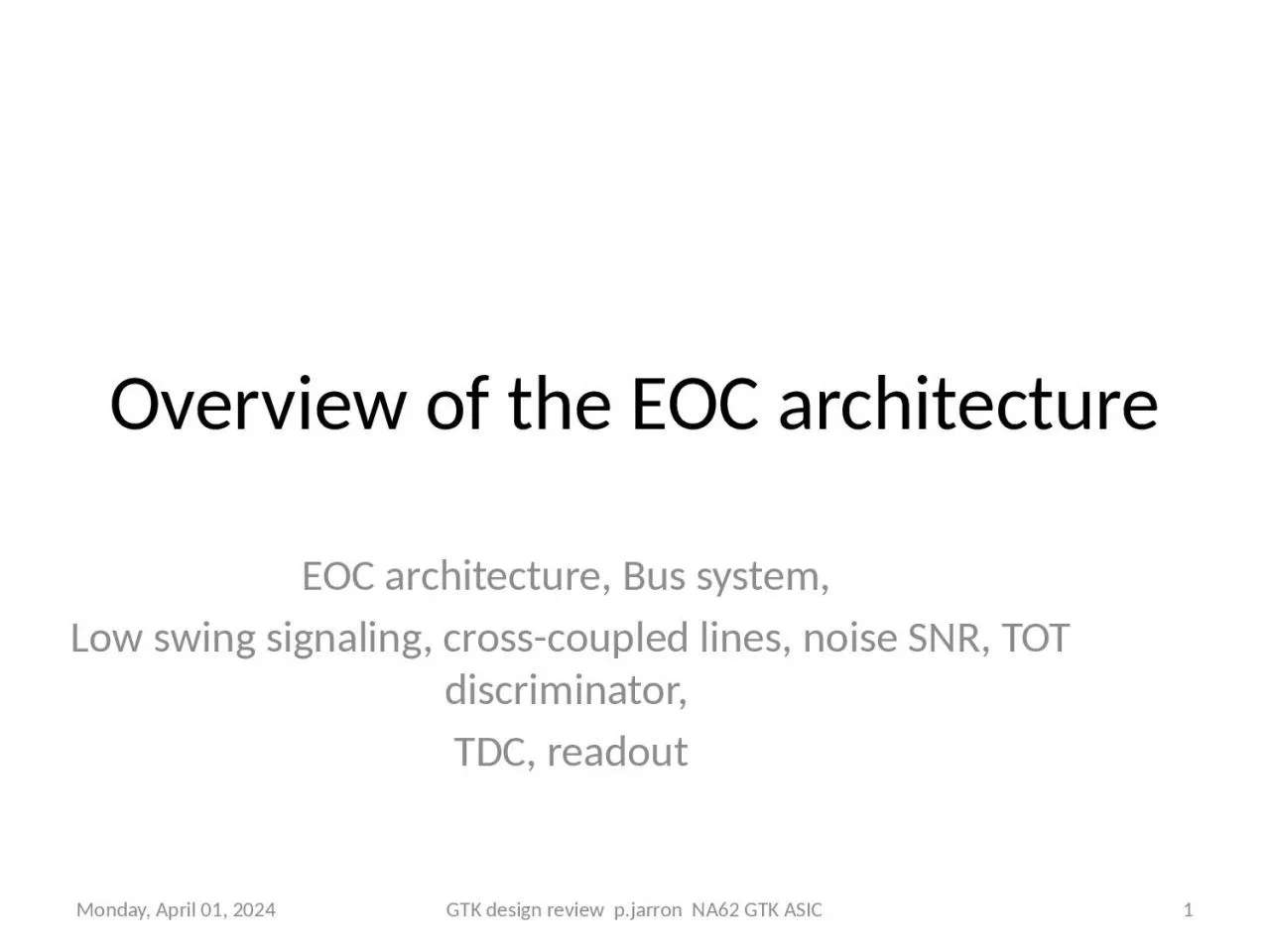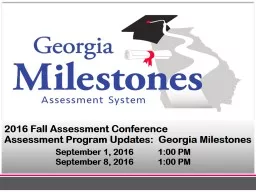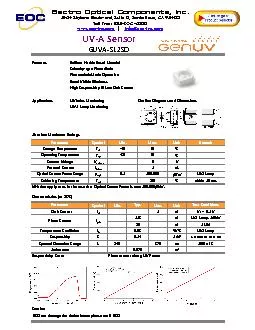PPT-Overview of the EOC architecture
Author : piper | Published Date : 2023-06-10
EOC architecture Bus system Low swing signaling crosscoupled lines noise SNR TOT discriminator TDC readout 6 October 2008 1 GTK design review pjarron NA62 GTK
Presentation Embed Code
Download Presentation
Download Presentation The PPT/PDF document "Overview of the EOC architecture" is the property of its rightful owner. Permission is granted to download and print the materials on this website for personal, non-commercial use only, and to display it on your personal computer provided you do not modify the materials and that you retain all copyright notices contained in the materials. By downloading content from our website, you accept the terms of this agreement.
Overview of the EOC architecture: Transcript
Download Rules Of Document
"Overview of the EOC architecture"The content belongs to its owner. You may download and print it for personal use, without modification, and keep all copyright notices. By downloading, you agree to these terms.
Related Documents














